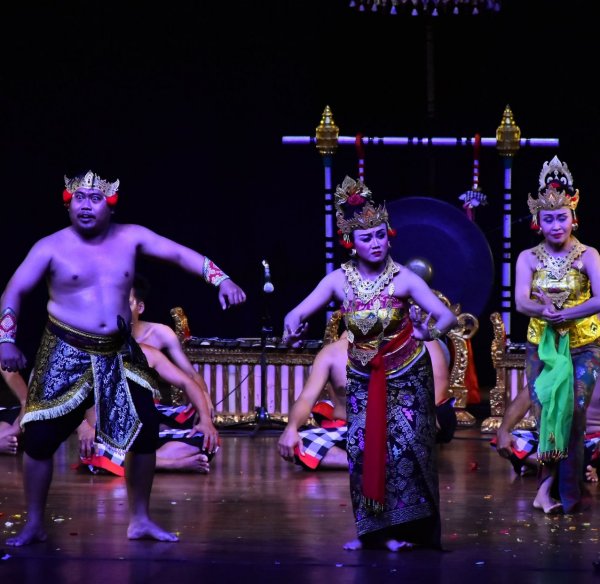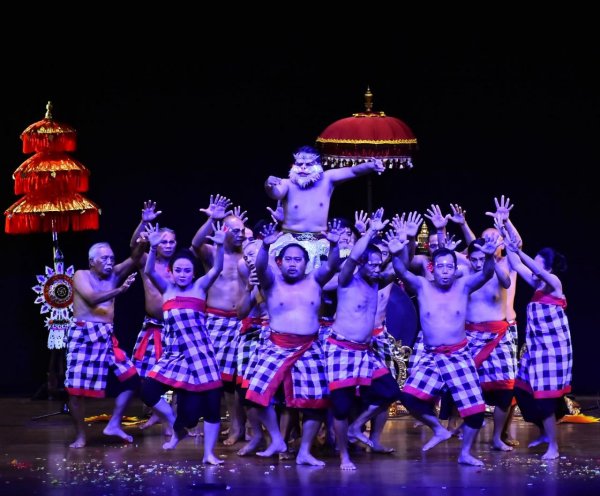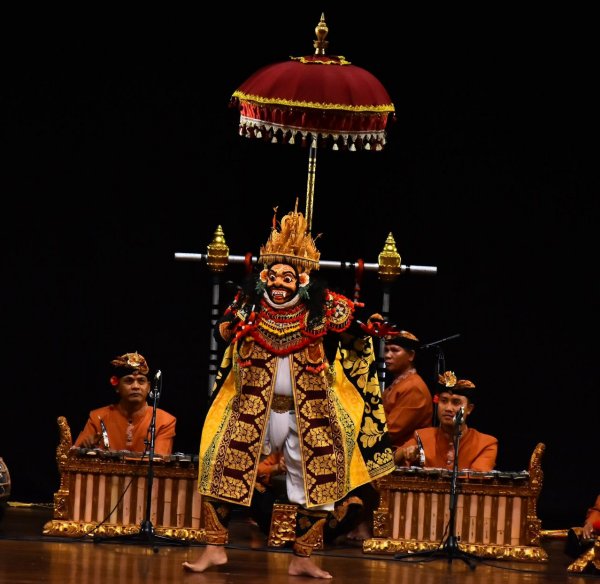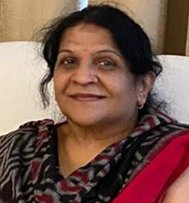
|   |

|   |
Ramayana Retold - Balinese way - Ranee Kumar e-mail: ranee@journalist.com July 13, 2024 It was an out-of-the-world experience to watch a foreign troupe enact an excerpt from the famed Indian epic Ramayana. The Bali based Indonesian version of the epic created by I Wayan Dibia, took the form of Kechak (pronounced as Kae-cha) eulogizing the most revered character Hanuman and his role in securing the whereabouts of abducted Sita (Shinta). In fact in Bali, Hanuman is a venerated figure who is considered pivotal to the entire unfolding of Ramayana after abduction of Shinta by Rawanah, ruler of Lanka (Alengka). The much needed brief on the dance technique, especially on the beat (talam) was provided at the very beginning by I W Dibia, a specialist and scholar of Balinese Performing Arts. The background on which this ballet was envisaged and created, was delivered with clarity so we could appreciate the performance with due regard. Otherwise, as Prof. Dibia said, on the gross level we could dub it as 'monkey dance'. It should be viewed against the backdrop of a multi-rhythmic vocal chanting: Chak-chak-chak (pronounced cha-cha-cha...) which broadly taken, is more or less akin to our 'sollukattu'. However, the professor also drove home a vital point, viz. the therapeutic effect of this chant like mantra when this dance is performed in temple precincts in Indonesia every day.  Prior to the commencing of Kechak, there was an invocation dance Gabor, to the song "Om Avignam Astu" seeking blessing of universe and deities for the success of the show as well as to welcome the audience. This was the mandatory, ceremonial dance usually performed in Indonesian temples. A pair of petite female dancers in traditional attire moved in tandem to the music, dove-like and gentle, slow and graceful, a la Odissi with lesser hasta mudras. This dance, we were told, is the work of a Balinese maestro and prince, I Gusti Gede Raka of Saba village in Gianyar district. Kechak: This 20-artistes group production lasted for two hours, enveloping that part of Ramayana where Rama "Wijaya' "(as lord Rama is addressed in Indonesian culture) and Lakshmana come down into forests in search of abducted Shinta. Everything about this theatre art was unique when compared to similar performances by Indian classical dancers. We couldn't help but notice that the music orchestra is seated centre stage like a horse shoe unlike our dances where the ensemble is seated close to the right wing of the stage. Arrayed against the orchestra in the forefront were the performers seated or standing as per the demands of the scene. The costumes were minimalistic: just a short-checkered lungi, as the group represented 'Vanaras' (monkeys) who inhabited that land. In their group is seated Hanuman, 'the white haired one' and he is respected and looked upon as the strongest, bravest hero. To the chant of the short staccato cha-cha, the non-interlocking symbolic sound to the fast rising interlocking rhythm of cha-cha-cha to three beats and seven beats, the story unfolds at two different locations - one local and the other in Alengka. The dancers stamping their feet in chorus keep pace with the beat of cha-cha-cha to three beats and seven beats, the story unfolds at two different locations - one local and the other in Alengka. The dancers stamping their feet in chorus keep pace with the beat of cha-cha-cha to different speed levels. There is no change of setting on stage so it was a bit mind-boggling to garner the change of place as the tale shifted from Dandakaranya to Alengka. With due credit to dramatic (poetic) justice, the audience who knew the Ramayana trail, should be able to appreciate and understand these negligible limitations.  The drama unfolds to a voice-over narration of how Rama Wijaya is banished to forests with his wife and brother Lakshmana from his kingdom and then loses his wife Dewi Shinta while dwelling in the Dandaka forests and in agony sets out with brother to search for her, sort of wrapped up the early part of Ramayana for us. It was like a jolt to the viewers when all of a sudden, the character Rama (played by Made Arsa Wijaya) and Lakshmana (Ketut Gede Agus Adi Saputra) emerge from the seated, chanting group, clad in dhoti with bows and express sorrow and anxiety searching for Shinta in vain. They both are supposed to have entered the Vanara kingdom. Then Hanuman with a white beard and white tail jumps to the foreground from behind the seated chanters and the group chant picks up tempo. Hanuman (role essayed by Cokorda Alit Artawan) feats on stage were a sight to watch. His dance to the beats of cha-cha-cha and the group enclosing him with stamping their feet in tandem completed the picture of a real monkey kingdom with non-stop chatter. It was a natural and artistic performance. He consoles a weary weeping Rama and promises to search for Shinta across the seas. Next, Hanuman sets forth to Alengka. Scene shifts to Shinta (Ketut Maskardenawangi) and Trijata (Putu Kartika), who are seen lamenting in a song and dancing. Prince Meganada (Wayan Sutirtha), son of Rawanah enters. His dance and attire looked similar to our Kathakali dancers, mask, hand gestures et al. The angular bending of knees and arms and vigorous movement of feet showed his character as a ferocious man. We are supposed to know that Hanuman has actually entered the scene. A combat ensues with the security guards guarding Shinta. But he manages to see Shinta and report to her. However, the clever Meganada captures Hanuman and his tail is set on fire.  The final fire scene, the burning of Lanka, a Balinese dance composition which is said to have inspired this production, was depicted with rustic aesthetics - red props held like flags by the group which converged to show a palace on fire. The same group duplicates as Vanaras as they hail Hanuman and carry him up on their shoulders in jubilation. The other décor on stage though minimal had an appeal and representation like the two red tower like structures on both sides of the group and a decorated cloth umbrella to depict the king and kingdoms. It is interesting to note that the Kechak dance originated from an ancient ritual of Bali Island called Sanghyang, aimed to repel evil spirits in which dancers fall into a trance to the chant of Cha-cha-cha. Even in this dance show, there was a noteworthy feature: before action on the story events commenced, the seated group was swinging sideways, backwards and forward to the chants with hands moving and shaking vigorously as if possessed.  Prior to the commencement of Kechak, was an interesting short solo dance called Legodbawa, by a masked male dancer (I Wayan Gede Aditya Pratita) following the invocatory dance. This piece depicted the wrath of lord Shiva over Vishnu and Brahma for challenging his supremacy. The well-known mythological story goes that lord Brahma and Vishnu in a momentary loss of their divine nature succumb to their ego in claiming to be more powerful than each other, oblivious of Shiva's presence in the universe. The duo fails the test of their divine prowess by not being able to identify the beginning or end of the phallus illusion created by lord Shiva. Result: both incur a curse each. The masked Shiva dancer's vigorous footwork and gestures were again reminiscent of our Kathakali dancers. Led by artistic director and choreographer I Wayan Dibia, these Balinese Performing Arts were presented by GEOKS Art Space, Singapadu-Gianyar, Bali. The performance at Kamani Auditorium, Delhi was under the aegis of ICCR and Indonesian Embassy celebrating the 75th anniversary of India-Indonesia diplomatic relations.  Ranee Kumar is a journalist who brings in three decades of hard core journalistic experience with mainstream papers like the Indian Express and The Hindu to arts reporting. Her novel 'Song of Silence' and guest editing of attenDance widen her horizon. |